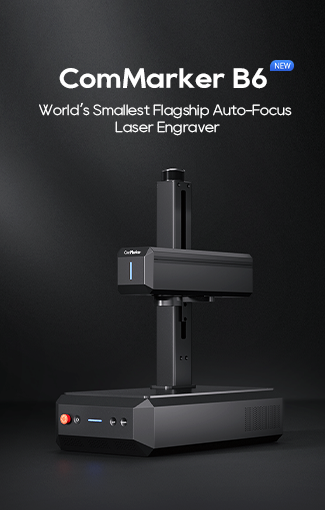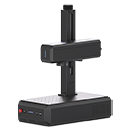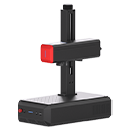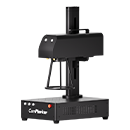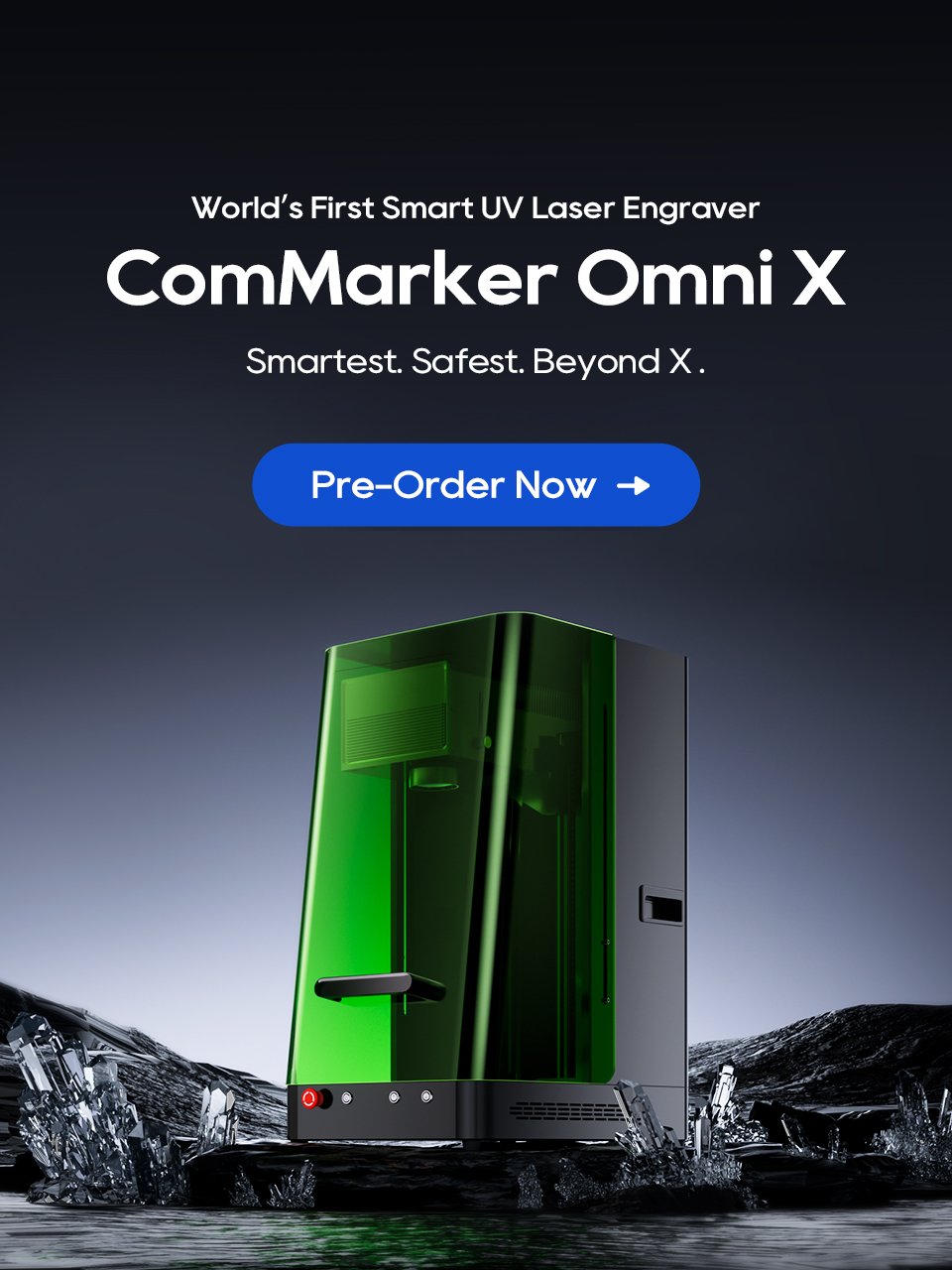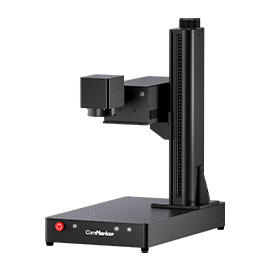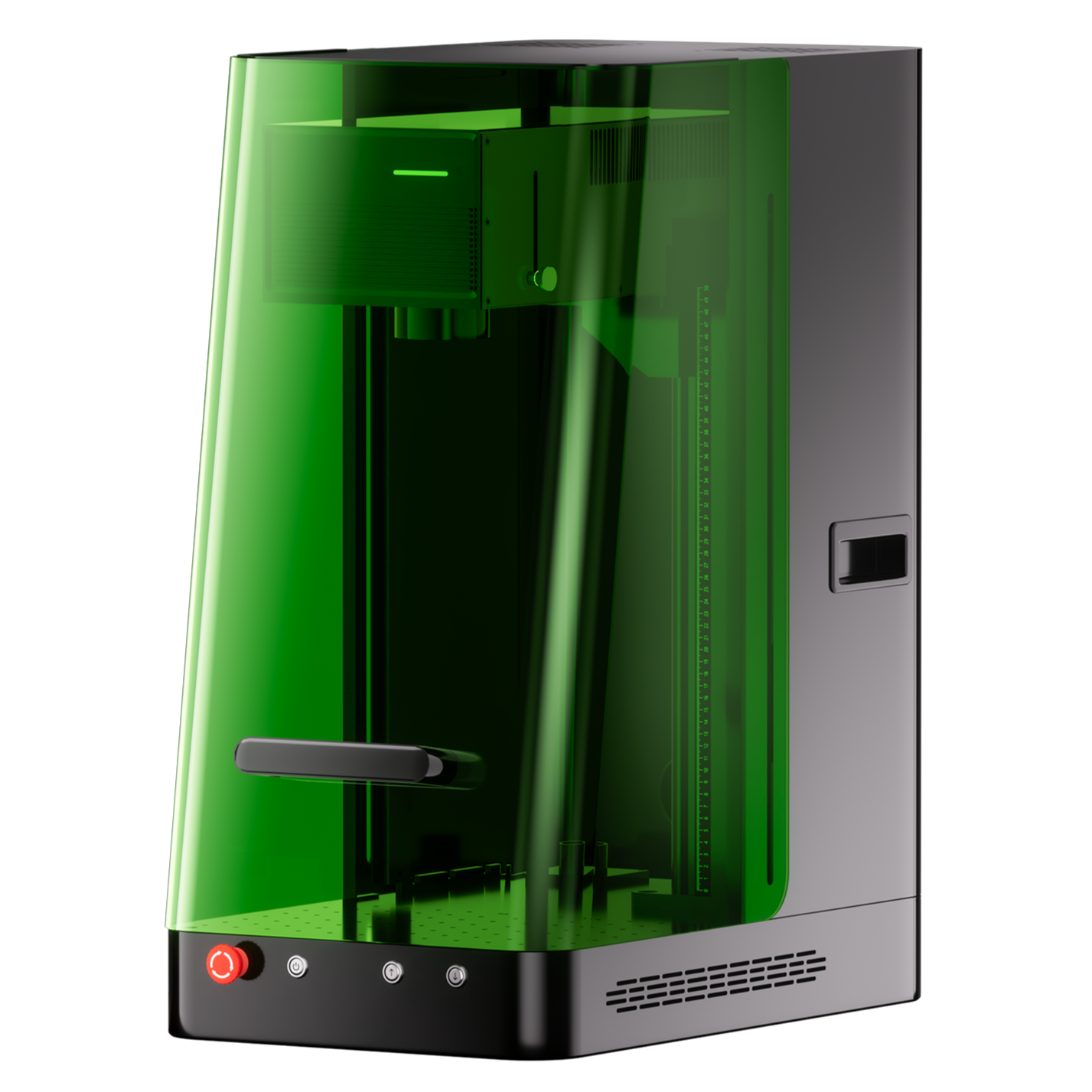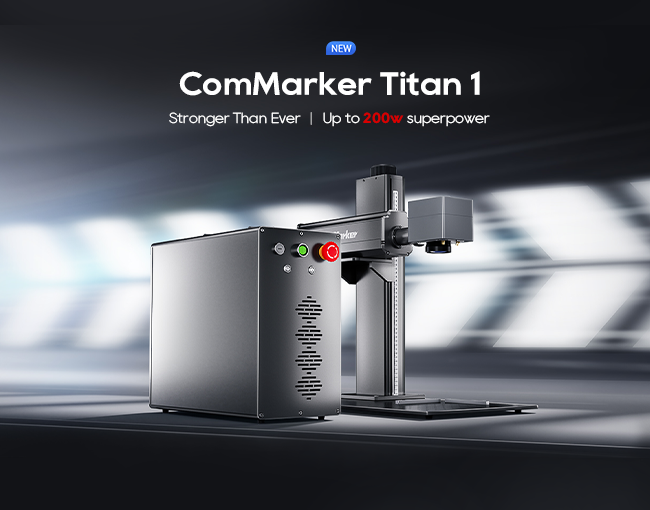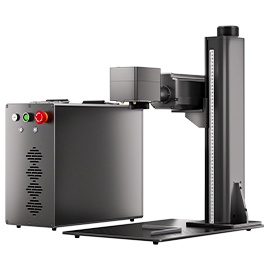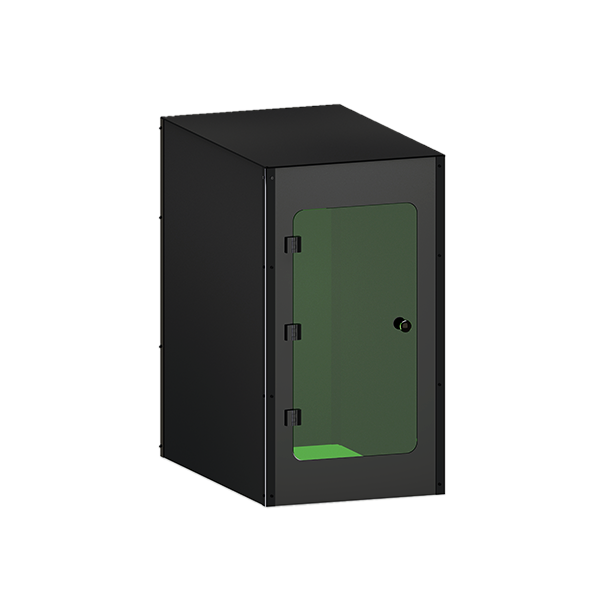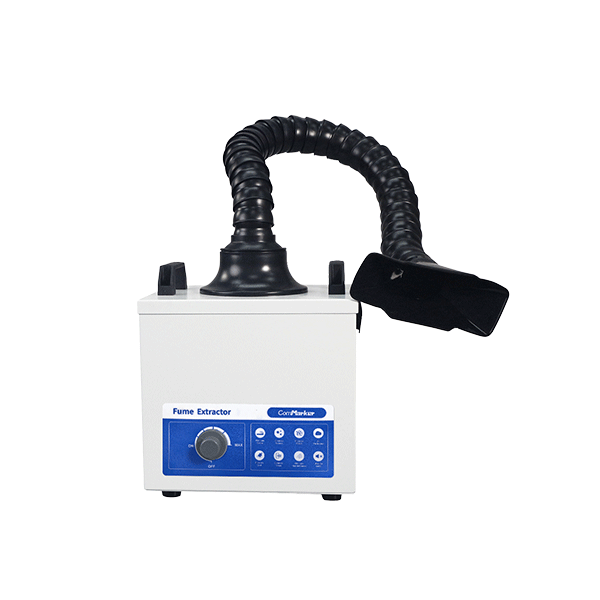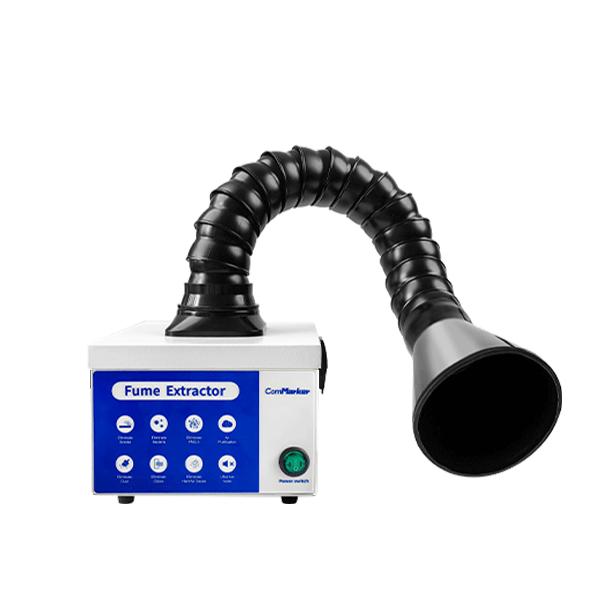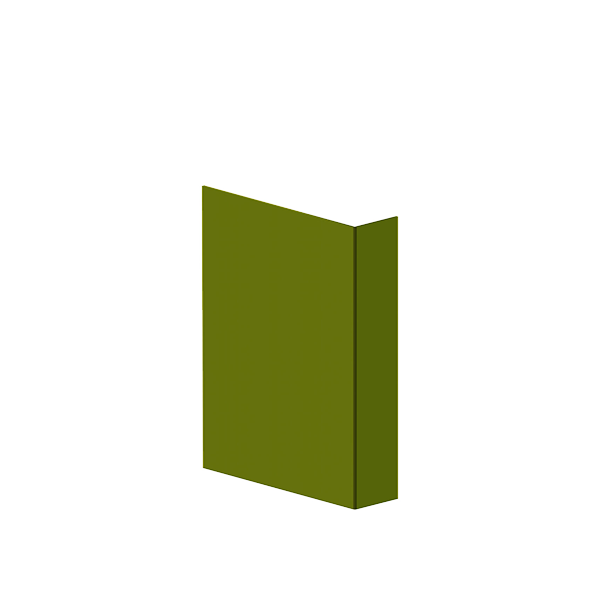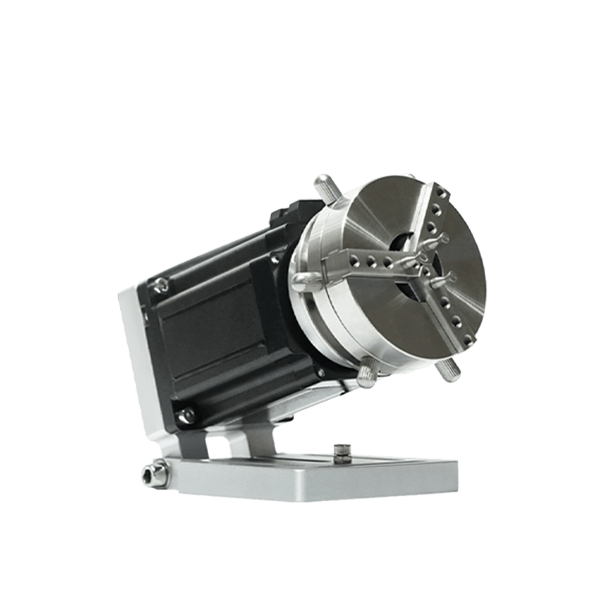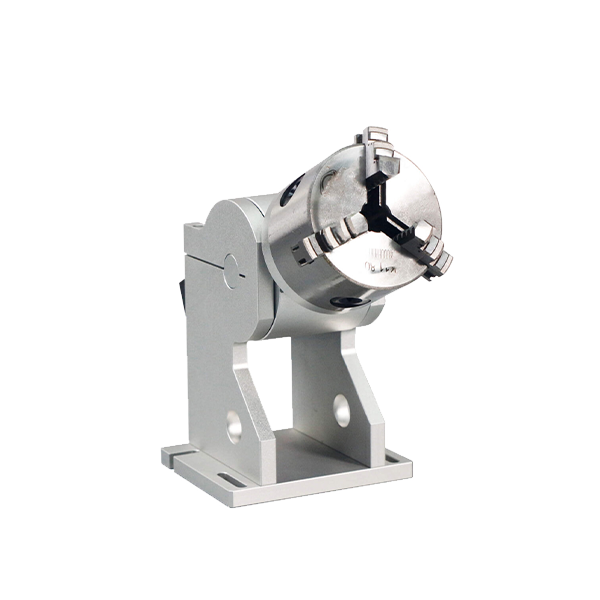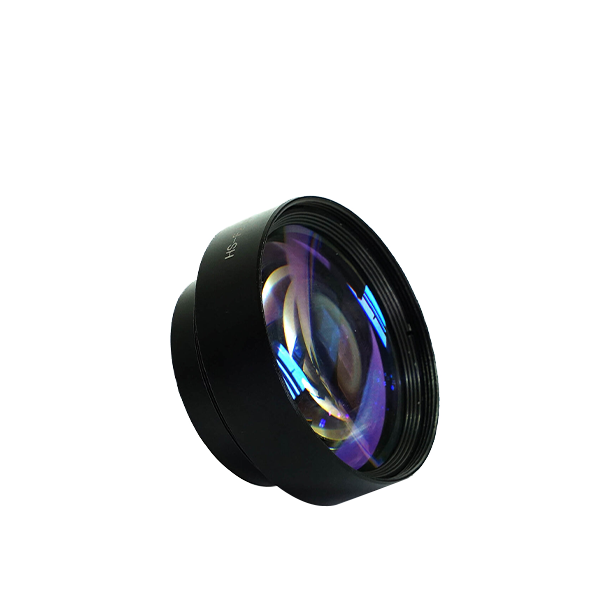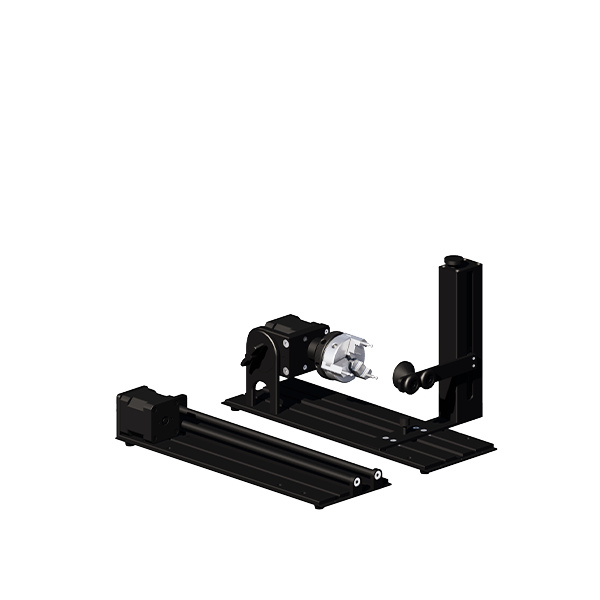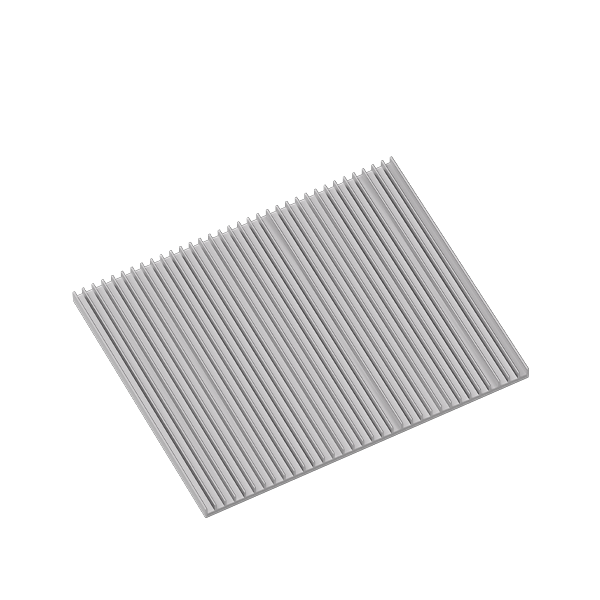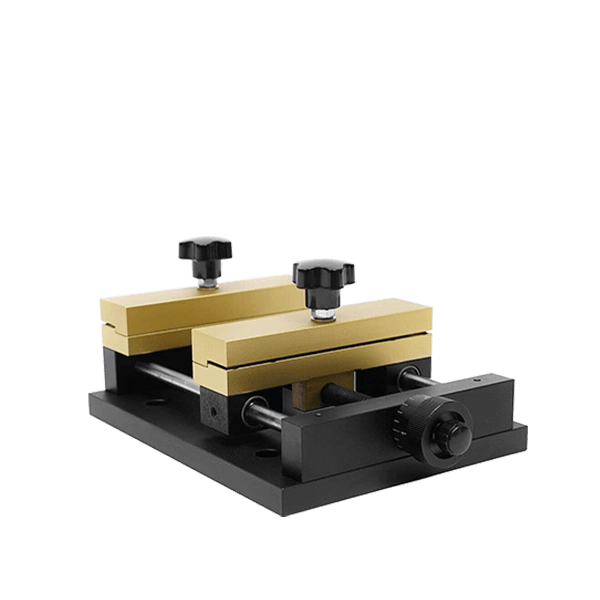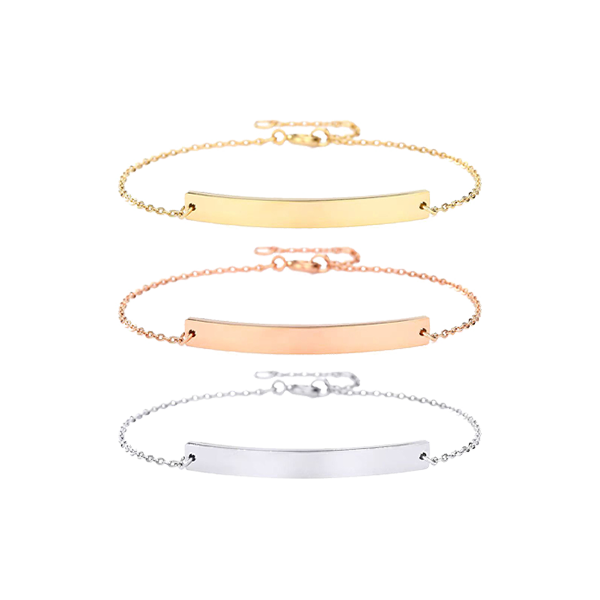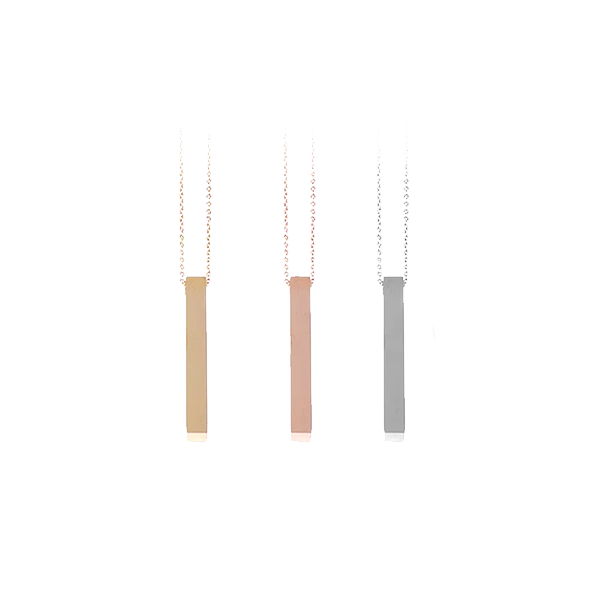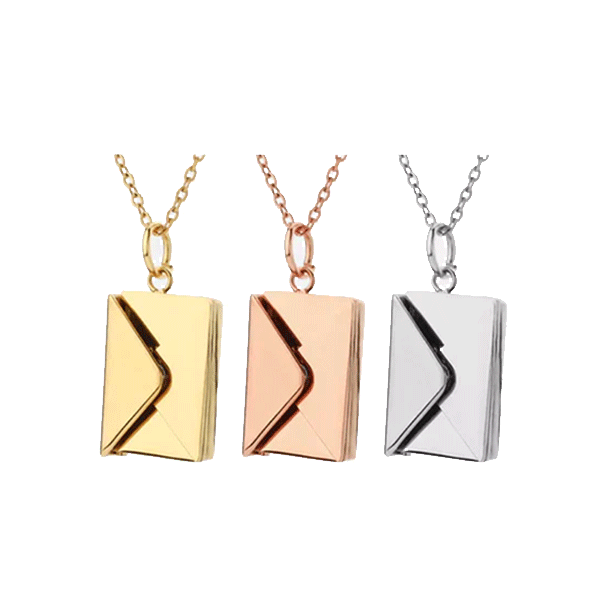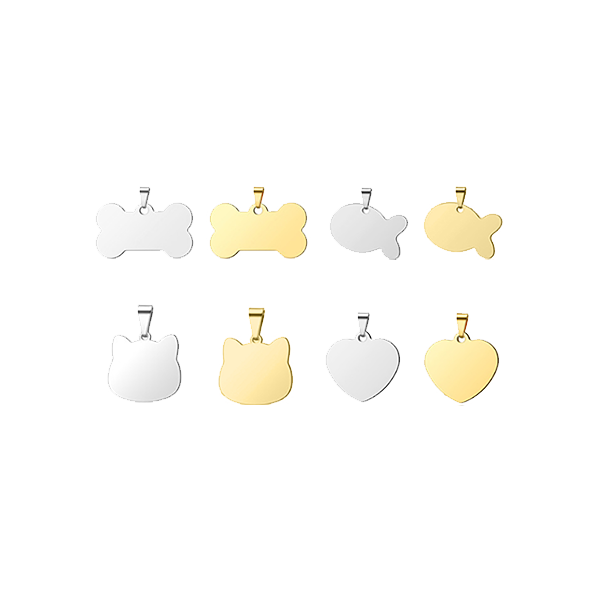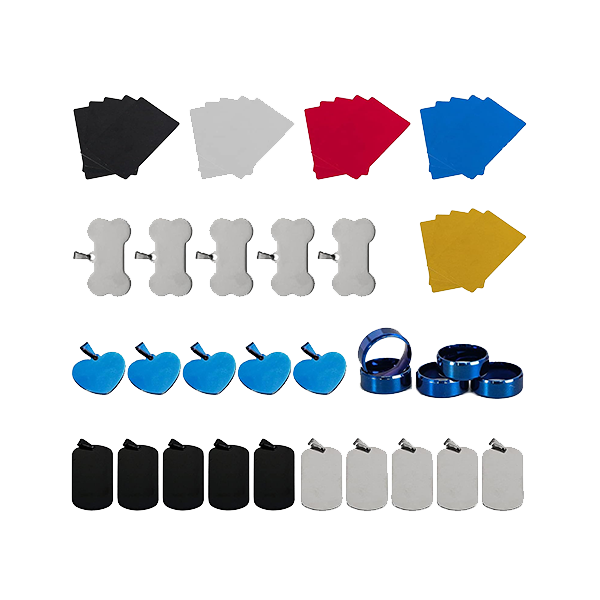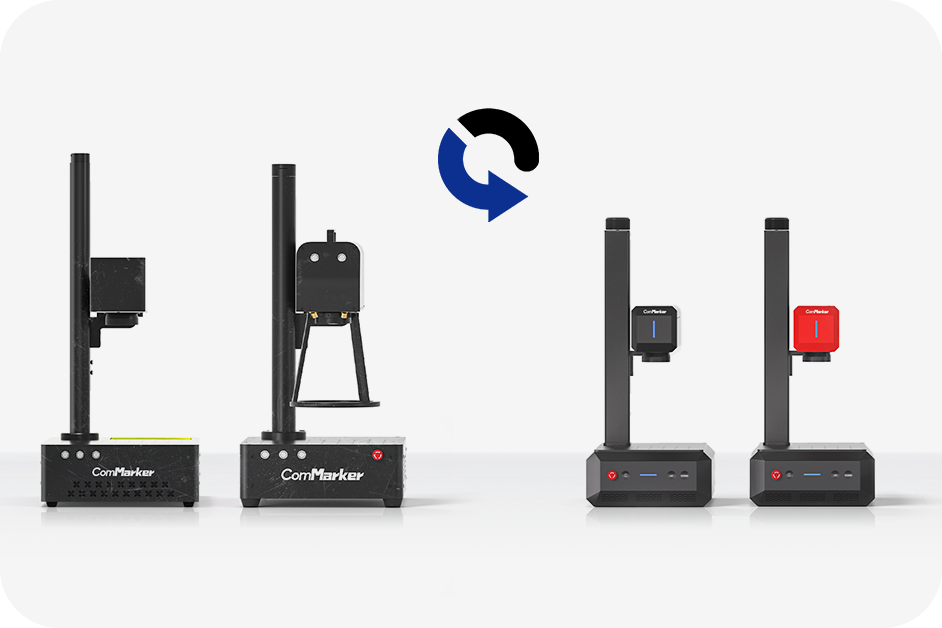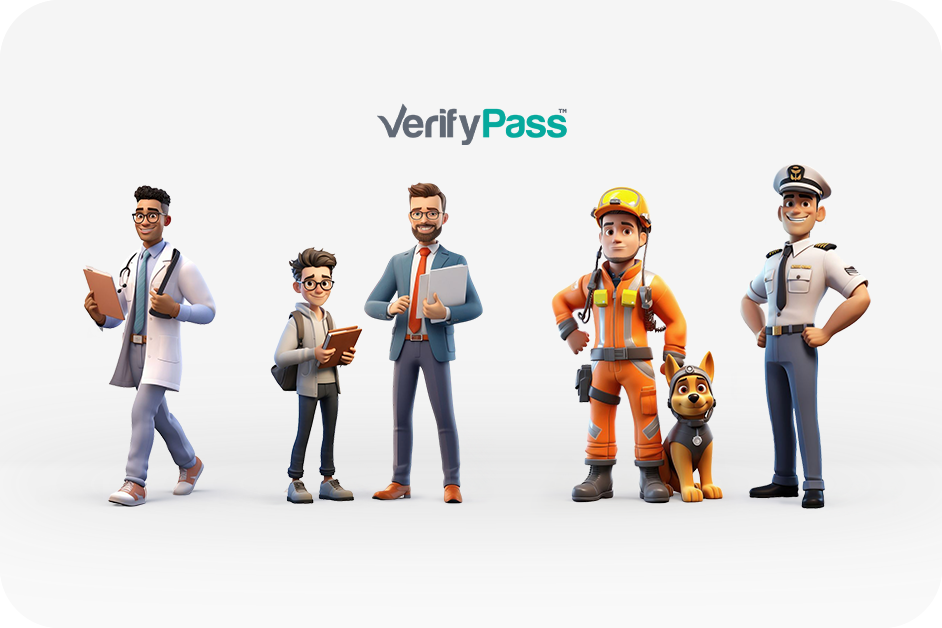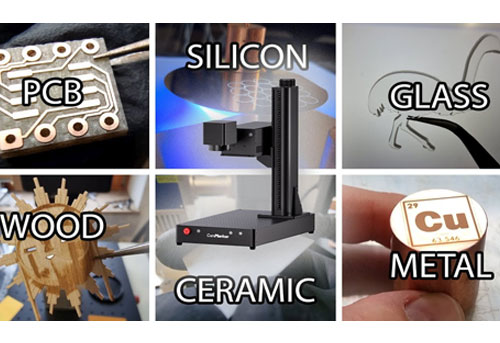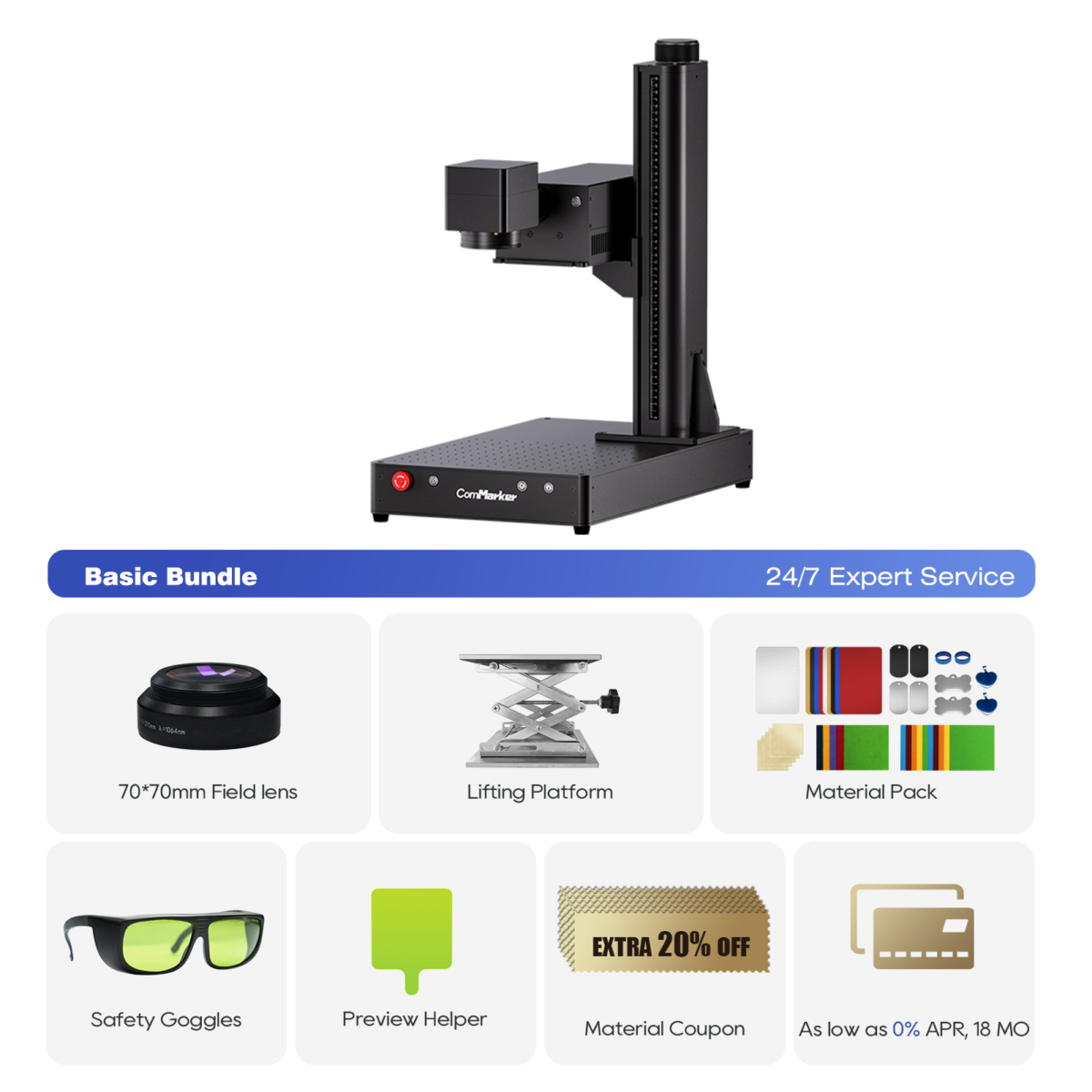の コムマーカーオムニ 1 is not your average desktop レーザー彫刻機. パルス付き 355 NM UVレーザー, sub-25 nanosecond pulse widths, and swappable F-Theta lenses, it enters a new class of photonic precision. But what makes it different—and why would anyone choose this over a higher-powered 60W infrared fiber system?
Let’s take a look under the hood, at the beam, and deep into the glass.
UV vs IR: Why Wavelengths Matter
Infrared lasers (like fiber and MOPA) dominate in general purpose engraving: 金属, カラーマーキング, deep cutting. But UV lasers, with their shorter wavelength, open doors to materials that are transparent to IR—like plastics, 木, ガラス, or PCBs.
UV’s shorter wavelength:
- Enables 光化学アブレーション rather than thermal burning
- Creates extremely small spot sizes for high DPI and clean micro-cuts
- Allows for sub-surface engraving in transparent materials
結果: Less heat, more control.

Optical Precision – The Truth About Spot Sizes
ザ・オムニ 1 includes two F-Theta lenses:
- 70×70 mm lens – Shorter focal length, smaller spot size
- 150×150 mm lens – Larger working area, but lower resolution
While theory suggests sub-40μm spot sizes, real-world measurements yielded:
- ~53 μm with the large lens
- ~40 μm with the small lens (with fine-tuning)
For comparison: CO₂ lasers typically operate in the 100–200 μm range.
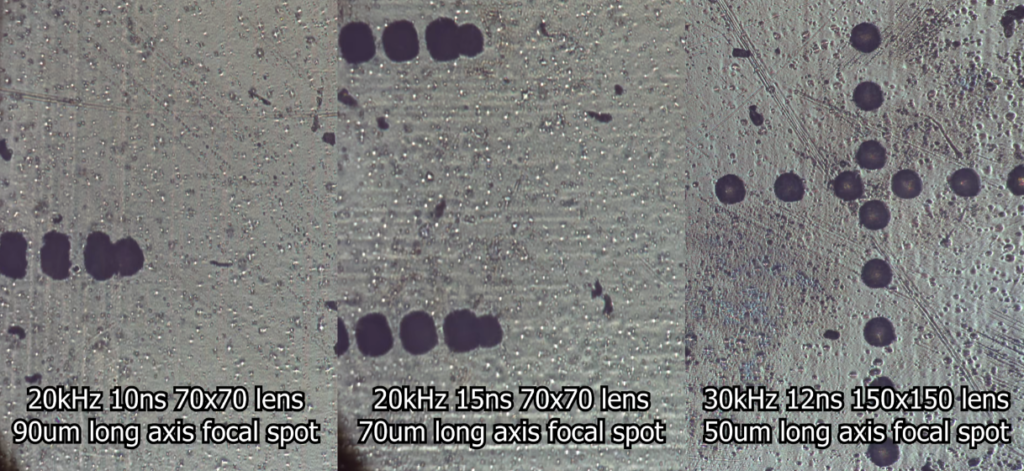
Pulse Widths and Beam Quality – Why It Matters
ザ・オムニ 1 allows users to dial in 頻度 (kHz) そして パルス持続時間 (ns):
- Best results (roundest beam profile): 30 kHz / 12 ns
- Too short or too long disrupts beam symmetry (TEM00 degrades)
Changing pulse parameters dramatically affects:
- Beam shape
- Focus accuracy
- Energy delivery per impulse
This matters especially for glass work, PCB micromachining, そして surface coatings.

Application Highlights
Here’s where this UV laser shines:
| 材料 | 結果 |
|---|---|
| プラスチック | Crisp white marks, no melting or charring |
| 木材 | Clean, micro-thin cuts with minimal burn |
| ガラス | Can embed 3D models 内部 the glass |
| プリント基板 | Micro-etch traces with <100μm precision |
| Textiles | Surface bleaching or engraving without damage |
| ケイ素 / ICs | Selective removal of epoxy molding |
ノート: Always use proper dust extraction. UV glass cutting releases hazardous micro-particles.

Inside the Omni 1 – A Technical Teardown
Control and Optics:
- JCZ controller card
- True Galvo mirrors
- Motorized Z-axis (on newer models)
- ソフトウェア: ライトバーン (limited for automation), or open-source Balor
Laser Module:
- DPSS laser with Nd:YAG crystal
- Q-switch driver for nanosecond-scale gating
- Tripled frequency via harmonic generation to 355 nm
- Thermoelectric cooling throughout
- Accessible pump diode (replaceable)
⚠️ Tip: Beam parameters affect thermal lensing in crystals—keep pulse energy consistent.

Nerd Feature: 3D Models Embedded in Glass
By compensating Z-height for glass’s refractive index, オムニ 1 can engrave 3D voxels at varying depths inside a cube. This opens up:
- Microfluidic devices
- Embedded art
- Secure 3D data markers
- Experimental optics and light-guiding structures
Requires:
- G-code slicing of 3D models
- Python scripting (via Balor CLI)
- Fine-tuned pulse parameters (例えば, 38kHz / 12ns)
Final Verdict
長所:
✅ Unmatched versatility across exotic materials
✅ Sharp, minimal heat cuts and marks
✅ Compact yet hackable design
✅ Perfect for PCBs, glasswork, and coatings
短所:
❌ Slow for deep cuts
❌ Manual calibration can be tricky
❌ Safety concerns – fully open-frame design
Who Is This For?
コムマーカーオムニ 1 isn’t for mass production or brute-force cutting. But for:
- Engineers
- Scientists
- Engraving artists
- Experimental makers
- Micro-manufacturers
…it’s a precision tool that unlocks things no other レーザー彫刻機 in its price range can do.
コムマーカーオムニ 1 レーザー彫刻機
あらゆる素材を解き放つ次世代レーザー. ZeroBurn™ 彫刻テクノロジー 世界初の 16K HD レーザー彫刻機 10,000mm/s SpeedMax™ 彫刻システム UV レーザーですべての素材のロックを解除 ColdFront™ サーマルテクノロジー 電動リフティング 2 EZCADおよびLightBurn 360°回転彫刻システムと互換性のあるオプションのレンズ
Want One?
Check out the コムマーカーオムニ 1 and stay tuned for more advanced guides on:
- Focus calibration
- Advanced PCB prototyping
- Sub-surface glass modeling





